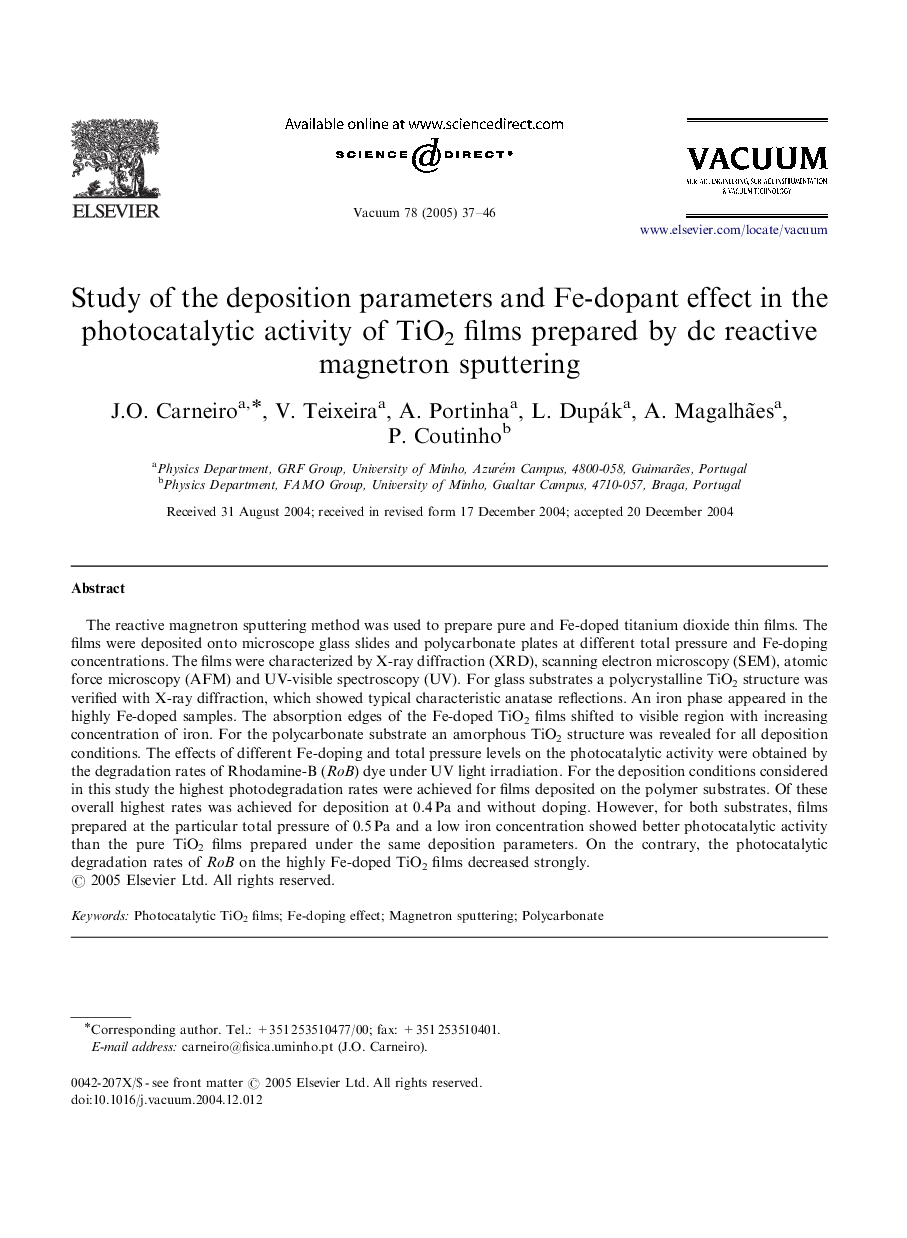| Article ID | Journal | Published Year | Pages | File Type |
|---|---|---|---|---|
| 10676175 | Vacuum | 2005 | 10 Pages |
Abstract
The reactive magnetron sputtering method was used to prepare pure and Fe-doped titanium dioxide thin films. The films were deposited onto microscope glass slides and polycarbonate plates at different total pressure and Fe-doping concentrations. The films were characterized by X-ray diffraction (XRD), scanning electron microscopy (SEM), atomic force microscopy (AFM) and UV-visible spectroscopy (UV). For glass substrates a polycrystalline TiO2 structure was verified with X-ray diffraction, which showed typical characteristic anatase reflections. An iron phase appeared in the highly Fe-doped samples. The absorption edges of the Fe-doped TiO2 films shifted to visible region with increasing concentration of iron. For the polycarbonate substrate an amorphous TiO2 structure was revealed for all deposition conditions. The effects of different Fe-doping and total pressure levels on the photocatalytic activity were obtained by the degradation rates of Rhodamine-B (RoB) dye under UV light irradiation. For the deposition conditions considered in this study the highest photodegradation rates were achieved for films deposited on the polymer substrates. Of these overall highest rates was achieved for deposition at 0.4Â Pa and without doping. However, for both substrates, films prepared at the particular total pressure of 0.5Â Pa and a low iron concentration showed better photocatalytic activity than the pure TiO2 films prepared under the same deposition parameters. On the contrary, the photocatalytic degradation rates of RoB on the highly Fe-doped TiO2 films decreased strongly.
Keywords
Related Topics
Physical Sciences and Engineering
Materials Science
Surfaces, Coatings and Films
Authors
J.O. Carneiro, V. Teixeira, A. Portinha, L. Dupák, A. Magalhães, P. Coutinho,
